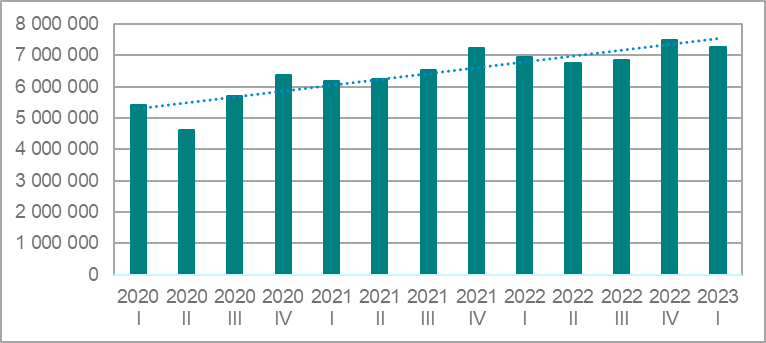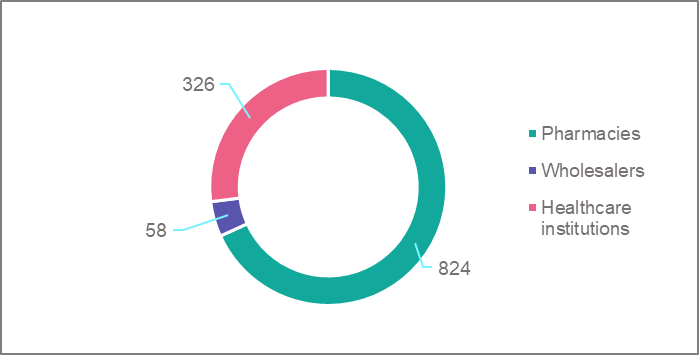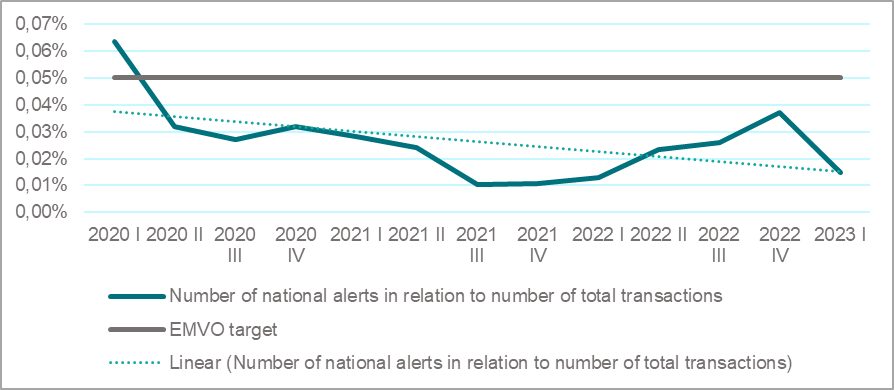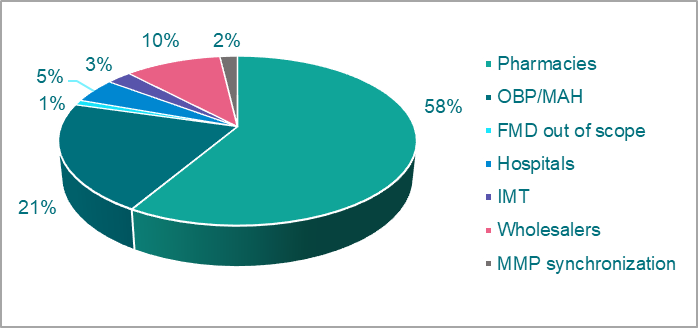The Latvian Medicines Verification Organisation (LZVO) has compiled the performance indicators of the Latvian Medicines Verification System (LZVS) for the 1st quarter of 2023 regarding the transactions made in the system, end-users and alerts and their most frequent causes.
In the 1st quarter of 2023, 27 million transactions have been performed in the LZVS, of which 7.2 million packages were decommissioned and supplied to patients. The number of decommissioned and supplied packages is slightly higher than in the corresponding period of 2022. The number of verified and decommissioned packages in Latvia has been gradually increasing every year since the verification system was launched.
Number of dispensed packs in LZVS per quarters

When the LZVS was launched in February 2019, 1 043 users – pharmacies, hospitals, wholesalers, and healthcare institutions – joined the verification system in Latvia. During 2019 and 2020, the number of end-users increased until all potential users joined the system. However, from the beginning of 2021, the number of users has been decreasing as access is closed for users who do not use and do not intend to use the system. These include pharmacy branches, instead of which a central pharmacy performs the verification of medicines. Several small healthcare institutions have found that the volume of medicines purchased is low, so they are renouncing their authorization to purchase medicines and continuing to buy medicines from pharmacies. The LZVO ensures that only legitimate end-users are connected to the system. The LZVO grants access to national competent authorities – the State Agency of Medicines (ZVA) and the Health Inspectorate (VI) for supervising the functioning of the repositories and investigating potential incidents of falsification. As of 31 March 2023, 1 208 active end-users had joined the LZVS.
End-users of the system

As one of the target indicators of the system’s operation, determined by European Medicines Verification Organisation, is the proportion of alerts from the total number of transactions – during optimal daily system operation, this indicator should not exceed the 0.05% mark. Thanks to the efforts of all participants in the Latvian system, the number of alerts has significantly decreased over time in Latvia. Although in the 4th quarter of 2022 the share of alerts in the number of transactions increased slightly, in the 1st quarter of 2023 it fell again and reached the 0.01% mark. This indicator shows a stable operation of the LZVS, and it is significantly lower than the average indicator of the member states of the system – 0.19%.
Latvian end-users on average receive alerts once in a three days, thus end-users, manufacturers, state institutions and the LZVO are able to track and analyse these notifications.
Number of national alerts in relation to number of total transactions

In the 1st quarter of 2023, alert notifications were most often associated with technical or human error: 39% were “property is already set on pack”, 25% were “unknown serial number” and 22% were “the batch ID does not match the serial number in the NMVS”. These three types of alerts were the most common throughout 2022 as well.
Analysing the origin and causes of alert notifications, in the 1st quarter of 2023, in 58% of cases, the reason for alert notifications was technical or procedural errors by pharmacies, like merged product batch data or mixed upper- and lower-case letters, as well as repeated operations with a product already decommissioned in the verification system.
Alerts by origin and cause

